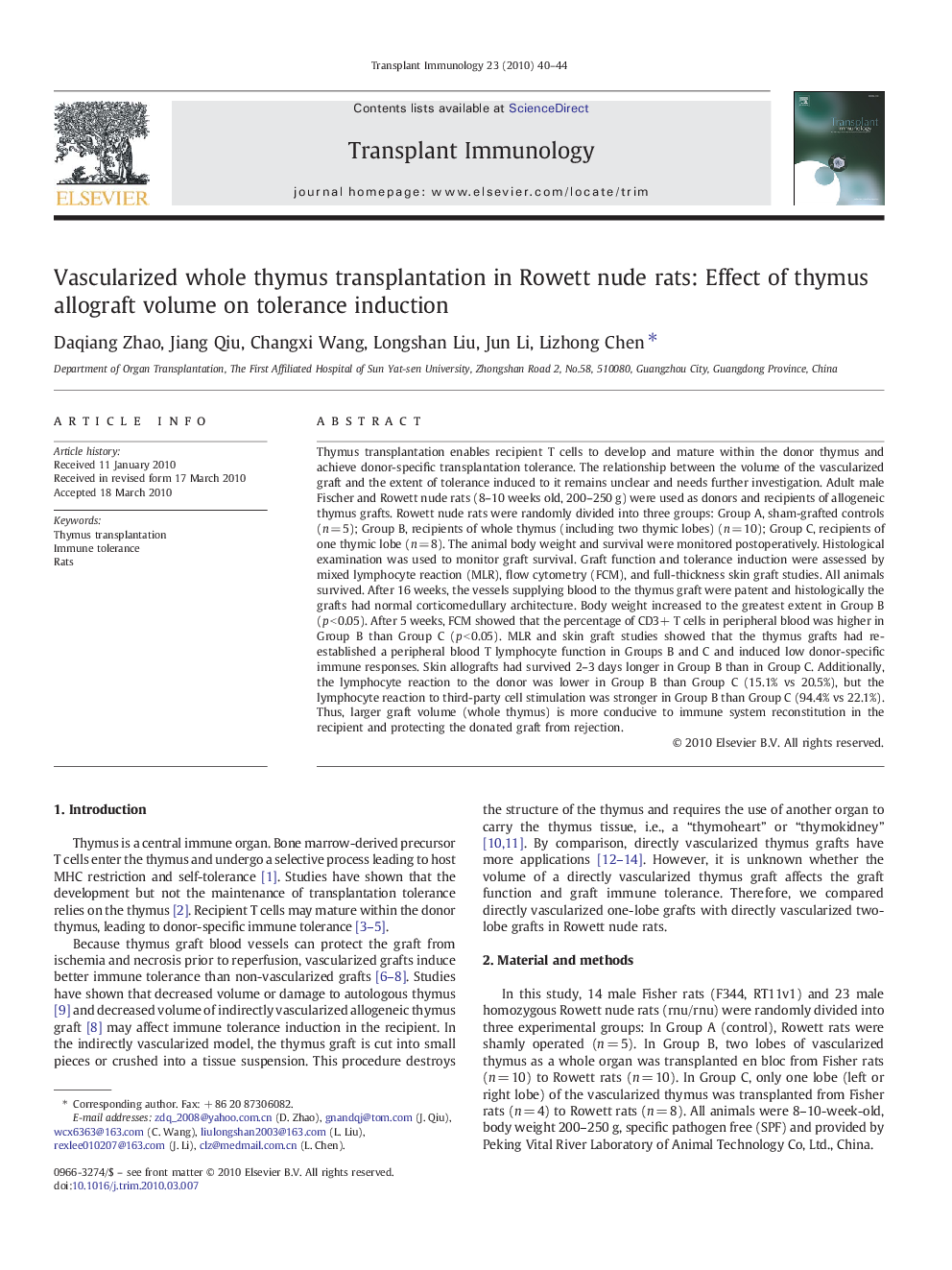| Article ID | Journal | Published Year | Pages | File Type |
|---|---|---|---|---|
| 3392244 | Transplant Immunology | 2010 | 5 Pages |
Abstract
Thymus transplantation enables recipient T cells to develop and mature within the donor thymus and achieve donor-specific transplantation tolerance. The relationship between the volume of the vascularized graft and the extent of tolerance induced to it remains unclear and needs further investigation. Adult male Fischer and Rowett nude rats (8-10 weeks old, 200-250 g) were used as donors and recipients of allogeneic thymus grafts. Rowett nude rats were randomly divided into three groups: Group A, sham-grafted controls (n = 5); Group B, recipients of whole thymus (including two thymic lobes) (n = 10); Group C, recipients of one thymic lobe (n = 8). The animal body weight and survival were monitored postoperatively. Histological examination was used to monitor graft survival. Graft function and tolerance induction were assessed by mixed lymphocyte reaction (MLR), flow cytometry (FCM), and full-thickness skin graft studies. All animals survived. After 16 weeks, the vessels supplying blood to the thymus graft were patent and histologically the grafts had normal corticomedullary architecture. Body weight increased to the greatest extent in Group B (p < 0.05). After 5 weeks, FCM showed that the percentage of CD3+ T cells in peripheral blood was higher in Group B than Group C (p < 0.05). MLR and skin graft studies showed that the thymus grafts had re-established a peripheral blood T lymphocyte function in Groups B and C and induced low donor-specific immune responses. Skin allografts had survived 2-3 days longer in Group B than in Group C. Additionally, the lymphocyte reaction to the donor was lower in Group B than Group C (15.1% vs 20.5%), but the lymphocyte reaction to third-party cell stimulation was stronger in Group B than Group C (94.4% vs 22.1%). Thus, larger graft volume (whole thymus) is more conducive to immune system reconstitution in the recipient and protecting the donated graft from rejection.
Related Topics
Life Sciences
Immunology and Microbiology
Immunology
Authors
Daqiang Zhao, Jiang Qiu, Changxi Wang, Longshan Liu, Jun Li, Lizhong Chen,
